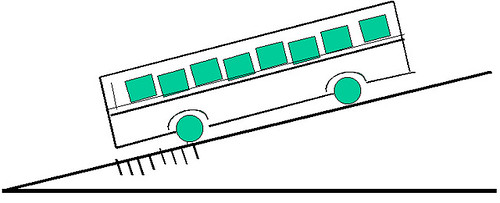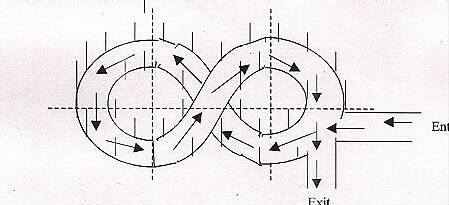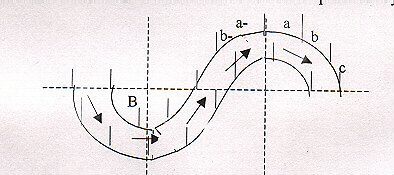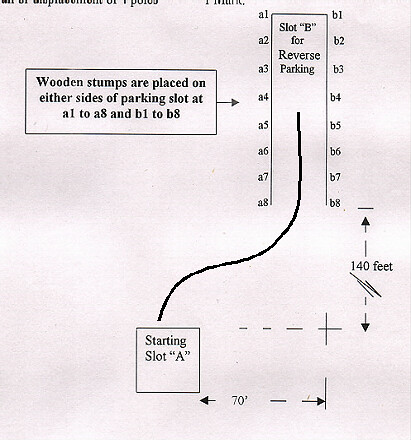Case study I on systemic reforms
TR Raghunandan, spokesperson, ipaidabribe.com introduces us to Pradeep Singh Kharola, Commissioner, Commercial Taxes and his three case studies that explore how a systemic approach can go a long way in reducing corruption, in extremely diverse scenarios.
Pradeep Singh Kharola, now Commissioner, Commercial Taxes in the Government of Karnataka exemplifies your typical behind the scenes officer. He is rarely seen in the press, yet, his efforts in reducing corruption are well known within government circles. Pradeep was in the transport sector from 1997 to 2001, during which time he was both managing director of BMTC and vice chairperson and MD of KSRTC.
From 2004 to 2009, Pradeep was Joint Secretary to the Second Administrative Reforms Commission and is widely credited with the painstaking background work that went into the detailed report of the Commission, running into several volumes.
Since 2010, Pradeep has been the Commissioner, Commercial Taxes and those in the know would appreciate the landmark reforms that he has brought about within the department.
Fighting corruption through systemic reforms
Abstract
In order to combat corruption various strategies have been adopted – these include punitive measures, risk analysis and identifying vulnerable areas for corruption to take corrective action, making citizens aware of their rights and empowering them in the battle of corruption and most importantly systemic reforms. Systemic reforms are an important tool to eliminate corruption as they seek to go to the very root of the problem and eliminate or at least reduce the scope for corrupt practices. Though systemic reforms sound very simple but they have not been used widely used in this battle against corruption. This paper attempts to highlight the importance of systemic reforms and then draw some general lessons from three different case studies. The paper concludes that unless systemic reforms bring in tangible benefits to the citizens on the one hand and to the organization on the other their sustainability remains doubtful.
CASE STUDY 1 - Recruitment of Drivers - an idea that brought in objectivity
1.The old process and its shortcomings
The Public Transport Undertakings have to recruit drivers in large numbers. The performance of the bus and the safety of the passengers hinges around the capability and skills of the driver. The selection process of drivers is therefore vital to ensure that only candidates with appropriate driving skills are selected. At the same time as there is a huge premium attached to a government service –most bus transport organisation are in the government sector- it is important to ensure that the recruitment process does not leave any scope for nepotism or corruption.
In the conventional way of testing driving skills, an officer would take a batch of candidates in a bus for a test. Each candidate would be given a chance to drive the bus where his ability would be assessed. Then he would be asked questions orally and depending on his answers and the driving skills he would be rated on a 25-mark scale. The procedurenarrated above suffered from several shortcomings.
i)The element of subjectivity was present to a large extent, giving scope for corrupt practices. There were several instances of collusion between the candidates and the Testing Officers.
ii)The driving skills of the candidate were not evaluated properly.
iii)Supervising the testing procedure was difficult.
2.The new method of testing
2.1 Developing the new method:
The problems of the old testing process were discussed with some senior drivers and officers. They all accepted that the old testing procedure needed to be revamped. Several ideas were thrown up by the employees. One suggestion was to simulate different driving conditions on a 'test track'. This idea was further developed and refined with repeated testing and iterations. After six months of intense work on the part of the drivers, mechanics and officers the new test was ready. The test involved laying a test track that would objectively and transparently test the candidate. Here once again care was taken to prevent observation and assessment being left to the testing officer, as subjectivity would creep in. The awarding of marks was automatic and left no discretion in the hands of the testing officer. Every candidate would in fact assign marks to himself. The test had the following five components.
•Starting and moving the bus on an up gradient.
•Negotiating the bus in a curve shaped '8 '.
•Negotiating an ‘S’ shaped curve in the reverse direction.
•Reversing and parking the bus into a prescribed slot.
•Identifying the traffic signals.
2.2. Starting and moving the bus on an up gradient:
Here the candidate was asked to keep the bus at the starting point on an up-incline. Then the candidate had to release the handbrakes, start the engine, engage the gear, and take the vehicle forward without allowing rollback. Parallel lines were marked behind the starting line at a gap of 4 inches to measure the rollback as shown in Figure-1. Marks were assigned to the candidate based on the following.

Figure 1
i)No rollback 5 marks.
ii)Engine switches off 0 mark.
iii)Rollback up to 4 inches 4 marks.
iv)Rollback up to 8 inches 3 marks.
v)Rollback up to 12 inches 2 marks.
vi)Rollback up to 16 inches 1 mark.
vii)Rollback beyond 16 inches 0 mark.
The capability of the driver in using the clutch, gear and the brakes was judged in this test.
2.3 Negotiating the bus on an ‘8’ curve:

Figure 2
A curve as shown in Figure 2 was marked on the ground and wooden stumps 1 metre tall were placed around it at regular intervals as shown in Figure 2. The candidate had to negotiate the curve within a minute without toppling or displacing any stump. If the candidate completed the exercise within a minute without toppling more than a pole he was assigned 5 marks. For every additional pole toppled a mark got deducted. Similarly for every additional minute taken or part thereof the candidate lost a mark. If the candidate got stuck in the curve then he was permitted to reverse the bus but for each such reversal he lost a mark. The capability of the candidate to manoeuvre the in the forward direction was put to test here.
2.4 Negotiating the bus on an ‘S’ curve in the reverse direction

Figure 3
Here the candidate had to manoeuvre the bus on an ‘S’ shaped curve in the reverse direction. A curve was marked on the ground and stumps placed around it – Figure 3. The candidate was first asked to take the vehicle from ‘A’ to ‘B’ in the forward direction so that he got a feel of the curve. Then he had to reverse the vehicle in the curve and complete within 3 minutes. If he succeeded without toppling more than a pole then he scored 5 marks. For every additional pole toppled he lost a mark. For every additional three-minute or part there off the candidate lost a mark. In case the candidate got stuck then he could move the bus forward, but for each such forward movement a mark was deducted. The capability of the driver as well as his judgement, while reversing the vehicle was tested here.
2.5 Reversing and parking the bus in a prescribed slot:

Figure 4
A starting point and a parking slot was marked on the ground as per dimensions shown Figure 4 The candidate was required to start the bus in the reverse direction from point ‘A’, and to bring the vehicle in the parking slot. There was no time limit prescribed but for each stump toppled a mark was deducted and for each corrective forward movement also a mark was deducted. This test adjudged the skill and judgement of the candidate in reversing the vehicle and parking it in the correct position.
2.6 Knowledge of the traffic signals:
All the traffic signals were displayed on a board and a serial number was given to each. The candidate was asked to explain five of these signals. In order to avoid any type of bias, the candidates himself chose the number of the signal he was required to explain by draw of a lot.
3.Ensuring Complete Transparency:
The administration of the test was so organised that it left no scope for any discretion, collusion or any other malpractice. The following were the steps taken for that.
a)Each candidate was administered the test twice by two independent officers. The candidates were assigned to the testing officers by a senior supervisory officer. The supervisory officer for each day would be selected on the previous night through draw of lots.
b)The testing officers were drawn from a large pool and they were asked to be ready. But they were assigned duties on the previous night only.
c)The testing officers were asked to fill up the marks immediately after the completion of each test, and show the marks to the candidate. After completion of all the five tests the candidate signed the mark sheet.
d)Two video cameras were deployed, which were manned by the vigilance wing of the Corporation and they would record the testing process at random.
e)Each day about 150 candidates would be called for screening. After verification of their records they would be brought to the test track. The procedure would be explained to them and then the candidates would be put through the test, with all other candidates watching. (The traffic signs were however kept out of the view of the other candidates).
f)The testing process was thrown open to media. The media highlighted the advantages of the new testing procedure.
Nothing succeeds like success– It was observed that after the induction of drivers recruited through the new procedure the accident rate came down. This became the strongest point in favour of the new test.
-Pradeep Singh Kharola
Watch this space for the next case study to follow – issue of statutory forms.
